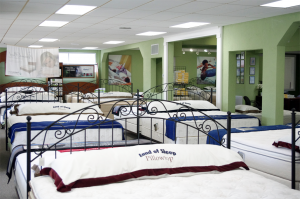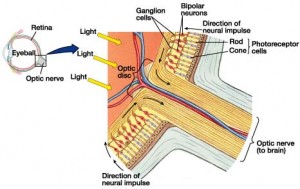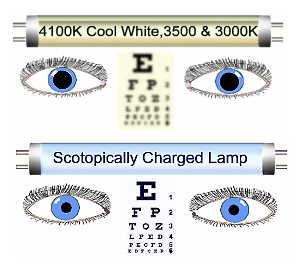Mattress Store | Brighter And Whiter Is Better
In retail most business owners take careful planning into the walls, the floors, and how products are displayed. But often we find that smaller business neglect to recognize the need for good lighting. Often times business owners tell us that by the time they get the store up and running that a good lighting system is not in the budget. Great lighting doesn’t have to come from any large expense. This is a misconception and due to lack of knowledge.
Great Lighting Is Not Expensive

Great lighting can be created by simply selecting a fairly inexpensive light bulb that is appropriate for the type of products being displayed, or sold. Factors to consider are the primary colors of merchandise, reflectance of walls and floors as well as natural day lighting coming in through windows. When we look at a situation such as a Mattress Store, the primary color is white. Therefore having light bulbs that give the truest tone of white coloring, the mattresses will look whiter and brighter.
There Is No Excuse For Bad Lighting
On a visit to another local mattress store, the sales person informed us that they did not want bright white light bulbs in their ceiling because they did not want customers to lay down and stare into a bright light. However retail logic tells us that customers are not concerned with what is in the ceiling, just how great the product they are interested in buying appears. So when Land Of Sleep decided to purchase natural White Light Bulbs from Synergy Lighting, they did exactly what any great mattress store should do. Make their product look amazing!
Making The Change Is Easy
The change over to Natural White Lighting for this mattress retailer was inexpensive and resulted in a 40% energy savings over traditional 4 lamp fluorescent fixtures. No new fixtures or large expenses was needed, just a simple change of light bulbs to do the trick! Not only was the change a dramatic effect, but it paid for itself from the energy savings. Now when customers come in to view a mattress, the product looks stunning, sales are increased and when laying down to try the matress out, customers can close their eyes and picture themselves in mattress heaven!
For more information on Natural White Light Bulbs, view our website and call Synergy Lighting for a free consultation.
Phone: (941)-756-4844
Toll Free: (877) 220-5483
e-mail: sales@synergylightingusa.com



